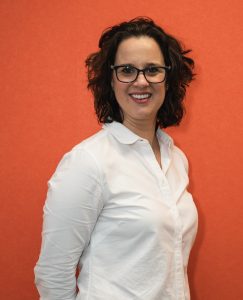Lara Parsons explains how a highway redevelopment project achieved positive outcomes for her client, local government and other stakeholders.
The role of engineers increasingly involves meaningful interaction with stakeholders.
Done poorly, it can be a frustrating box-tick that results in stalled projects and costly changes. But done well, it can create better results, add to job satisfaction and even help reduce project costs.
“If I could spend all my time explaining engineering design onsite to Traditional Owners, key stakeholders and people who can see the value of what we’re doing, I would,” said Lara Parsons MIEAust, Senior Associate of Transport Infrastructure at Jacobs Solutions.

For the last four years, Parsons has been working in various roles, including Drainage Team Lead, Traffic and Safety Team Lead, and Options Assessment Team Lead, on the final section of the Manuwarra Red Dog Highway project.
The road will connect Karratha and Tom Price in the Pilbara region, cutting a six- to seven-hour trip in half when complete.
Much of Parsons’ work on the project has been influenced by discussions the project team has had almost every step of the way with Traditional Owners, pastoralists, mining companies, local residents and the local government.
“I do think as a society we tend to oversimplify too much,” she told create. “We need to give people more credit for their ability to understand that engineers are trying to solve a problem, and [we need to] listen openly when they have concerns.
“But we can’t solve it if we can’t define it. And we can only define it if we actually understand what the stakeholders want and need.”
“Bulldoze-and-build”
At Engineers Australia’s Climate Smart Engineering 2023, Parsons will discuss the multiple benefits that influenced design outcomes as she and her team took stakeholders on a journey through the highway project.
“When you look at a map, the highway looks like it’s in the middle of nowhere,” she said. “But there’s a lot of privately owned infrastructure including major railway lines, access tracks, construction camps, mining camps, active mines and complex layers of land tenure.”
In fact, 20-something years ago Parsons was a part of the team that built the railway duplication.
“Back then, particularly in such a remote location, there was a … bulldoze-and-build sort of mentality,” she said.
“In the past, we would have presented a design to the stakeholders and said, ‘Here you go, this is what we’re going to do.’ Now, we take them on a journey and have lots of small conversations rather than one big one.”
The result is an infrastructure design, in this case a highway, that is far more sympathetic to the needs of the stakeholders.
“We’ve got pastoralists who have watering points and natural foraging for their cattle that influence our decision-making about alignment,” she said. “We need to make sure we’re taking that into account and even if we can’t meet their needs every time, we can have the conversation.
“We’ve had a number of discussions with Traditional Owners around what their expectations were for the road. They want it to happen. They’re interested in employment opportunities and the accessibility to land that this will bring.
“But they also want to make sure we’re respecting the cultural value of the area, where they’ve had continuing culture for 30,000-plus years.”
Listen and learn
The project team has also run workshops with local governments, emergency services and mining companies. Some of those conversations have led to cost savings.
For example, on other projects, engineers would design all floodways to be serviceable during a one-in-10-year event. But consultation with stakeholders changes all that, as it enables a powerful read of expectations.
“For this project, we haven’t focussed solely on the design event,” Parsons explained. “Some of our crossings are not serviceable in a one-in-two-year event. But that’s okay, because we can show that in a one-in-two-year event the highway will only be closed for a short period that is acceptable to the majority of people using the road.
“With the volumes of water passing through these crossings, if we were to design that same crossing to a traditional, one-in-10-year event, the waterways crossing we would have to design would result in a major bridge structure, increased risk to the upstream railway and mining infrastructure, and significantly increased impacts on adjacent sensitive environmental communities.”
“Our design solution increases regional accessibility [while] meeting the needs of the community, and provides a safe, resilient and cost-effective asset for the client.”
The job of design engineers is changing, Parsons said, and we need to “understand what stakeholders need from the piece of infrastructure, to know what’s important to them and how it’s going to benefit them so that our technical solution is sympathetic to their needs and concerns”.
“How can we identify and maximise opportunities, minimise the costs and improve the benefits for everyone if we’re not listening to the people we’re doing this for?”
Lara Parsons is just one of many inspiring experts in attendance at CSE23 — so don’t miss out. Discover the stellar line-up and secure your place today.
